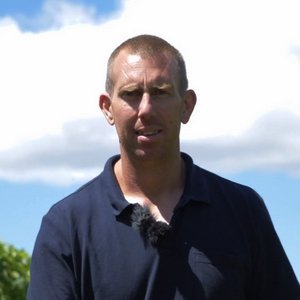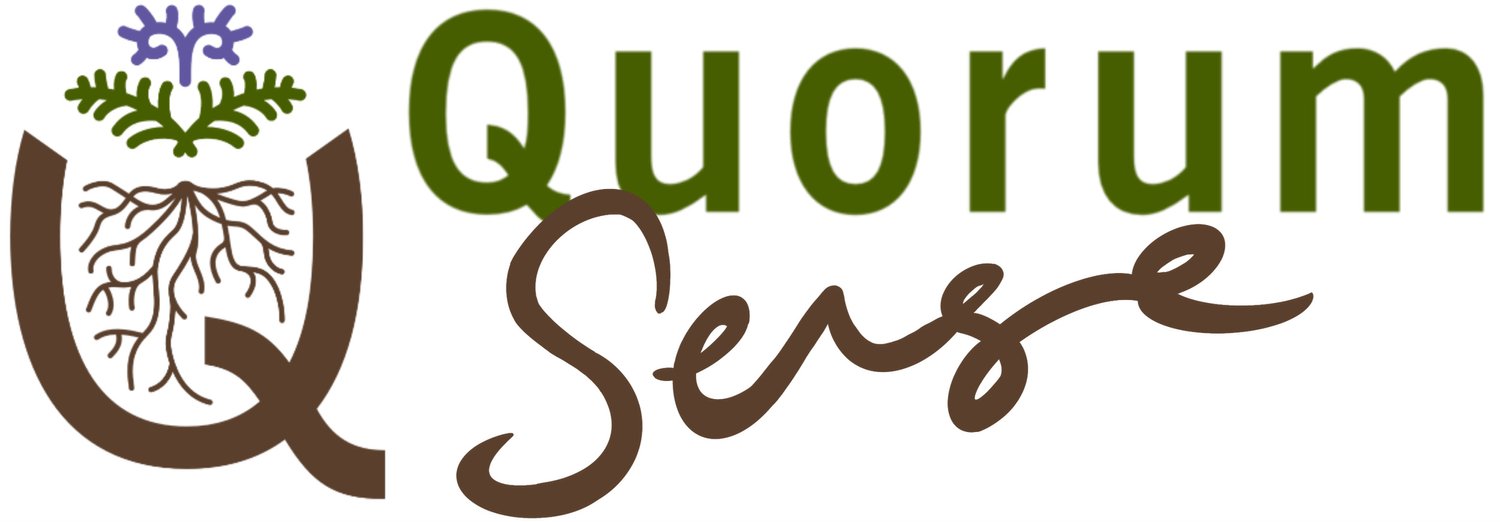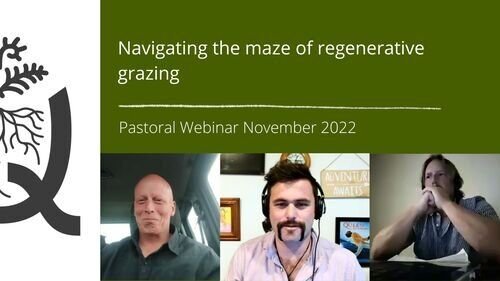Holistic grazing sheep in vineyards
Integrating livestock is a regenerative principle often taken as given in New Zealand. Here, we explore how improved sheep integration can increase vineyard health and reduce inputs, including a large system change underway at Greystone Wines to integrate sheep year-round.
Video description: Greystone Wines are transforming their whole system, lifting the height of the vines to allow year-round grazing.
Video description: The Holdaways have shifted from set-stocking autumn and winter grazed lambs to shifting every 3-4 days (approx. 3-4ha).
More on holistic grazing sheep in vineyards
Globally, livestock have been removed from many arable and horticultural systems, which have become increasingly dependent on machines and inputs to do jobs that can be performed by livestock.
(click on images to view full size with captions)
Greystone Wines: Organic pests and disease management
Greystone Wines have been winter grazing the neighbouring farmers sheep since the vineyard was established, typically from May-September.
Since 2020 they have also been bringing sheep back for 4-6 weeks of leaf plucking in November/December, increasing the area from 12ha in 2020 to 42ha in 2021.
Now they are transforming their whole management system, lifting the height of the vines to allow year-round grazing, eliminating mechanical pasture and weed management and gaining the nutrient cycling benefits of the four-legged biodigesters. The main downside of this shift is that leaf plucking will again have to be done by hand.
The system change is predicted to halve tractor passes in the vineyard, with associated fuel and labour savings. The increased vine height should also reduce frost and disease pressure.
Implementation at Greystone:
For leaf plucking, the team work on about 200 ewes in one hectare for 24-36 hours (depending on grass covers) achieves 90-95% leaf pluck.
Care needs to be taken to ensure sheep don’t eat grape bunches. The bitterness of immature fruit means sheep won’t eat them unless they are thirsty, so make sure sheep have access to water (and know where it is). Expect a small amount of damage on the first day or two as the sheep taste test the immature grapes.
Holdaway vineyard: Developing a biological approach
The Holdaways used to set stock 1000-1500 merino lambs across the 182ha vineyard for five months over autumn/winter.
Observing some of the negative impacts of set stocking on soils and lambs, plus learning about the benefits of rotational/holistic grazing, has led to a shift in approach. Lambs are now shifted every 3-4 days (approx. 3-4ha) and depending on autumn growth, will complete one or two rotations of the vineyard.
In addition to improving nutrient distribution and reduce stock camping, lamb survivial and health has also significantly improved. The team also attribute this to the diverse pastures and cover crops that now make up the lambs diet.
Implementation at Holdaway vineyard:
1000-1500 merino lambs are stocked on 3-4ha for 3-4 days (depending on pasture covers and mob size).
If pasture covers are low, the lambs will be rotated faster and may graze the vineyard twice before spring.

“The benefits to management, if done right, completely outweigh any potential negatives of having sheep in the vineyard. If you're interested in soil health, [then] putting sheep in the vineyard is a simple decision to make.”
Richard Holdaway, Holdaway vineyard
Related content on: grazing management, soil nutrients
Sam Lang is joined by guest farmers Dave Mitchell and Duncan Humm share how they (and other farmers) are successfully incorporating diverse forage crops into their farm systems.
Dean Martin’s adaptive grazing management is growing soil organic matter, deeper rooting plants and supporting a sheep-based system built around thriving soil.
Host Sam Lang and guest farmers Rhys Roberts (Align Farms) and Miah Smith explore techniques, successes and challenges bringing diverse pastures into NZ farming systems.
Hear from Mark Koopmans (North Canterbury), Jono Frew (Otago) and Russell Heald (Manawatu) as they discuss the practice of deferred grazing in New Zealand.
Hear from Mark Koopmans (North Canterbury), Rachel Short,(Taranaki) and Ross Johnson (Wairarapa) as they discuss regenerative grazing systems, techniques and farmer-led research.
Cherryle Prew founded NZ’s only Soil Food Web lab 20 years ago. You’ll want to grab a cup of tea and a biscuit for this conversation!
Hawke's Bay's Michael Reilly and Taranaki's Rachel Short share their experiences with livestock collar technology. What role can it play in NZ farming systems? What are the opportunities and concerns?
Insights from four experienced livestock farmers who’ve developed their own unique regenerative approaches to regenerative livestock production.
The Bielski’s have tried, tested and evolved a high performance sheep grazing, cropping and pasture management system that's resilient, low input and profitable.
Five years in, Miah and Jenny Smith reflect on their regenerative dairying journey and the dramatic improvements in animal health, margins and their own quality of life.
Father and daughter duo Shane Birchall and Meghan Schutt share their learnings and experiences in transitioning to a self-sufficient, low waste dairy and beef farm operation.
South Otago's Pete Blair and Hawke's Bay's Michael Reilly compare experiences navigating the multi-faceted maze of regenerative grazing techniques in very different contexts.
Michael Reilly shares the ups and downs of his journey from Sydney suburbia to regenerative Hawkes Bay farmer, and what's changed along the way.
Improving the relationship between soil and plant health is fundamental to helping cycle nutrients and increasing nutrient availability to the vines.
Improving livestock integration into cropping systems can bring a wide range of benefits and displace the need for increasingly expensive inputs.
In this Quorum Sense webinar we will be focusing on grazing management and planning in a New Zealand landscape.
Exploring different practices for building soil health and broader ecosystem health, which underpin the success of biological and regenerative arable systems.
Regenerative coach, pastoral farmer and market gardener Jules Matthews explores the challenges and opportunities within complexity, and the uncertainty it calls us to embrace.
This April 2021 webinar features four farmers panelist: Mark Anderson (Dairy), Rachel and Kenneth Short (Dairy)and Dean Martin (sheep and beef).
Pastoral farmer and grazing coach Siobhan Griffin shares her passion for regenerative pastoral farming, the opportunity to benefit farmers, consumers and our climate.
Regenerative farmer and grazing coach Siobhan Griffin talks about increasing soil organic matter, growing more grass, reducing costs and improving milk and cheese quality.
Mark Anderson's South Otago dairy farm has adopted a bale grazing wintering system that’s shown dramatic improvements for soil health and animal welfare.
Josh Bradfield farms on the rolling hills on the north of the Clutha River, adding diversity to his pasture, decreasing inputs and reducing tillage.
“Coming into farming on our own account without much experience meant we weren't tied to tradition and weren't afraid to try new things.”
This April 2021 webinar features four farmers panelist: Mark Anderson (Dairy), Rachel and Kenneth Short (Dairy)and Dean Martin (sheep and beef).
South Otago dairy farmers Mark and Madeline Anderson are on a pathway to lower inputs and improved soil health using regenerative principles.
This February 2021 webinar features four farmers: Jules Matthew (Sheep & Beef), Hamish Bielski (Sheep & Beef), Miah Smith (Dairy) and Mark Anderson (Dairy).
In this second episode, Hamish Bielski gives an insight to how his grazing management and recovery works and the advantages he has observed.
Ten years of higher grazing densities & longer recoveries have transformed Dean Martin’s previously unproductive pastures - ewes & lambs are now thriving on it!
South Otago sheep and beef farmers Amy and Hamish Bielski have spent four years using regenerative principles, focusing on adaptive, high density grazing management.
Disclaimer: The information, opinions and ideas presented in this content is for information purposes only and does not constitute professional advice. Any reliance on the content provided is done at your own risk. (click here to view full disclaimer).



































